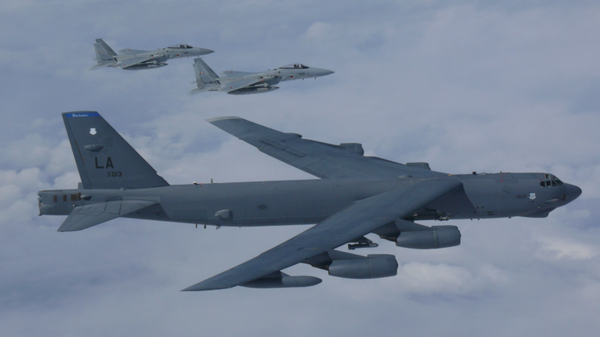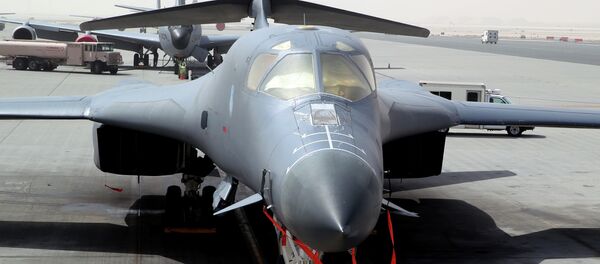“I am focused a lot on a different operational mentality in the command, to think about great power competition,” Ray told reporters on Wednesday during a Defense Writers Group breakfast in Washington, DC.
Ray, who previously served as deputy commander of US European Command, said he was against a "steady bomber force" in Europe or anywhere in the world.
"Why wouldn't I [instead] bring significant combat capability to the theatre in a time and place of our choosing and…bring regional stability [to allies and partners?]" Ray told the reporters.
Last month, the command deployed six B-52 Stratofortresses and more than 400 personnel from the 2nd Bomb Wing at Barksdale Air Force Base, Louisiana, to RAF Fairford, England for a month-long rotation, Military.com reported.
READ MORE: US’ B-21 Stealth Bomber on Track, Headed for First Flight — Air Force
Europe has had a bomber rotation at least once a year as part of Operation Atlantic Resolve in the wake of Crimea's reunification with Russia in 2014. The Pentagon sent two B-2 Spirit bombers and three B-52s to Europe that year for training events days after then-President Barack Obama announced he would increase the US military presence in the region in an apparent response to Russia's actions. Since then, different bombers, including the B-1B Lancer, have operated in European airspace alongside NATO allies.
"I think that signals a little bit more of the dynamic approach that we're going to take," Ray said.
"We're going to go to Central Command, we're going to go to the Pacific. We're going to go to lots of places," he said, adding that the strategic shift is needed to exercise a “dynamic force employment […] to bring long-range precision strike into any theatre along with our allies."
The general did not specify which bomber variant would deploy next as part of the new strategy, or when such a deployment would take place.





